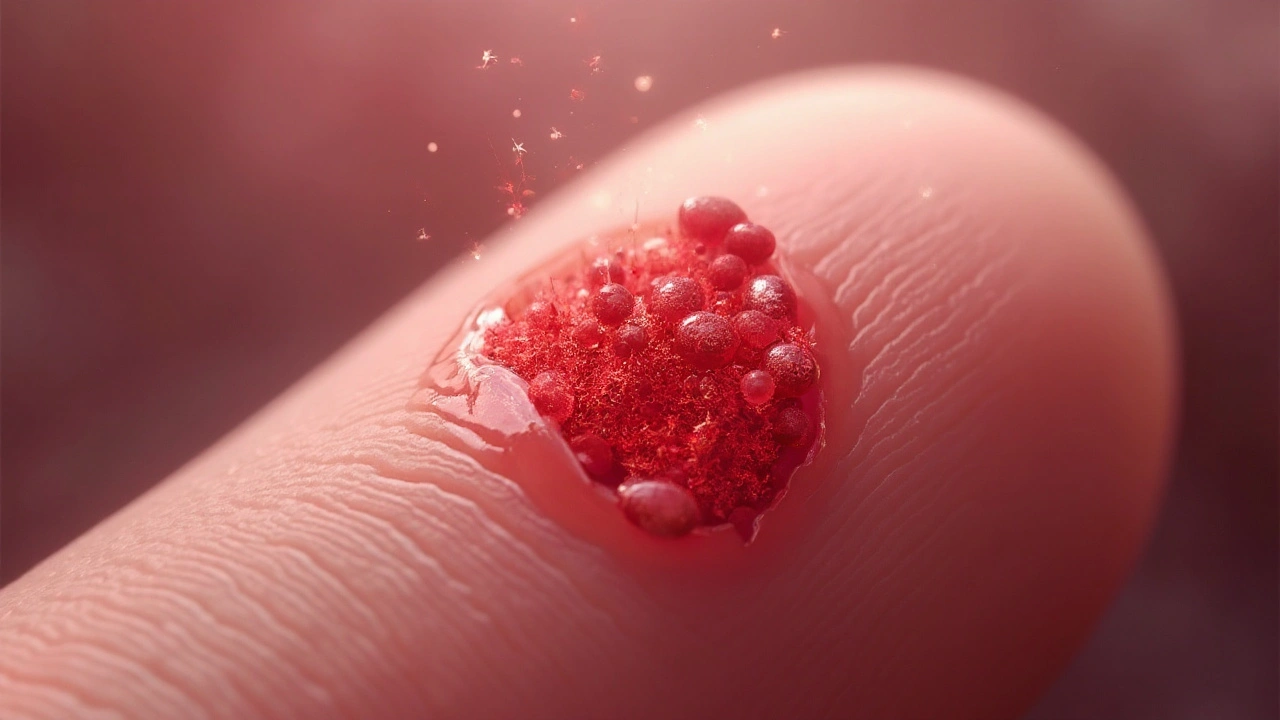Ever wonder why a cut stops bleeding after a few minutes? It’s all thanks to the coagulation cascade – a series of chemical reactions that turn liquid blood into a solid clot. Understanding this process helps you see why some people bleed too much while others form dangerous clots.
The cascade is split into three parts: the intrinsic pathway, the extrinsic pathway, and the common pathway. The intrinsic route kicks in when blood touches a damaged surface inside a vessel. It uses proteins called factor XII, XI, IX, and VIII to start the chain reaction.
The extrinsic pathway is faster. When tissue is injured, it releases tissue factor (TF). TF teams up with factor VII, jump‑starting the clotting process from the outside of the blood vessel.
Both pathways meet at the common pathway. Here, factor X becomes active (Xa) and, together with factor V, converts prothrombin into thrombin. Thrombin is the star – it changes fibrinogen into fibrin strands, which weave a net that traps cells and seals the wound.
If any step in the cascade falters, problems arise. Too little activity can cause bleeding disorders like hemophilia A (missing factor VIII) or hemophilia B (missing factor IX). People with these conditions bleed longer after cuts and may need factor replacements.
On the flip side, an overactive cascade can lead to thrombosis – clots forming inside vessels and blocking blood flow. Conditions such as deep‑vein thrombosis or pulmonary embolism often involve excess thrombin or fibrin.
Doctors control the cascade with medicines. Warfarin blocks vitamin‑K‑dependent factors (II, VII, IX, X), slowing clot formation. Newer direct oral anticoagulants (DOACs) like apixaban or rivaroxaban target factor Xa or thrombin directly, offering easier dosing.
Knowing the cascade also guides emergency care. For severe bleeding, doctors give fresh‑frozen plasma, platelets, or specific factor concentrates to jump‑start the missing steps. For clots, they may use clot‑busting drugs (tPA) that dissolve fibrin.
Every day, lifestyle choices affect the cascade. Smoking, obesity, and inactivity raise clot risk, while adequate vitamin K intake supports normal clotting. Staying active and maintaining a healthy weight can keep the cascade in balance.
Bottom line: the coagulation cascade is the body’s built‑in repair system. When it works right, a small cut seals quickly. When it’s off‑balance, you face bleeding or clotting dangers. Understanding the basics helps you recognize symptoms early and talk intelligently with your healthcare provider about tests or medicines.

Discover how blood clotting kick‑starts wound healing, the key players in the process, and what you can do to support optimal tissue repair.